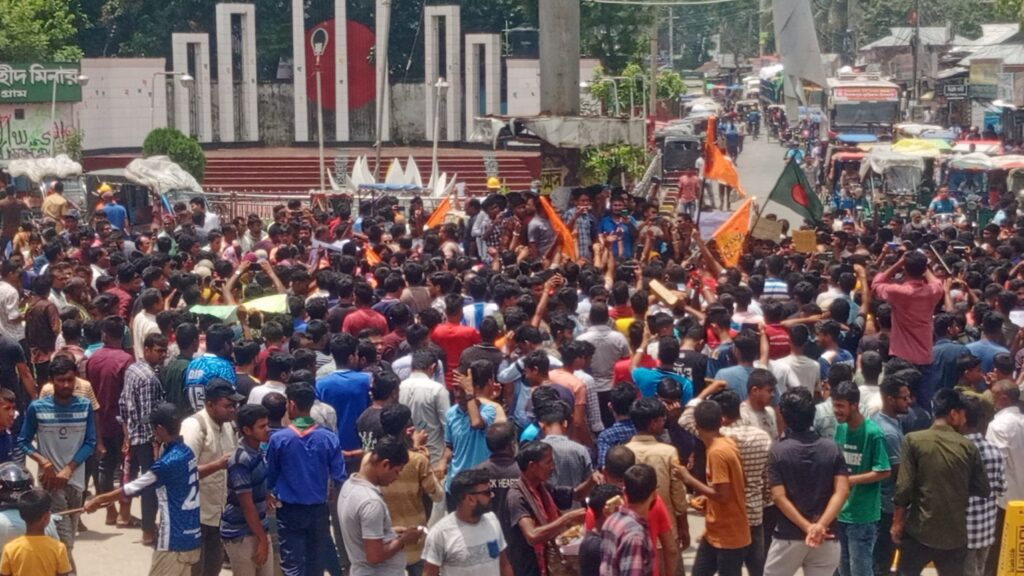
Hindus protesting against attacks against the community and looting of homes, temples and businesses in Kurigram on August 10, 2024
The sustained decline of the Hindu population in Bangladesh due to sectarian policies and systemic hostility raises the vital question of protection of minority rights in India’s neighbourhood
The decline of the Hindu population in Bangladesh is a complex issue that inter twines historical, social, political and economic factors. The Hindu population in the region now known as Bangladesh has a rich history, dating back thousands of years. Despite being a significant community before the partition of India in 1947, the demographic landscape started changing dramatically following the establishment of Pakistan and especially in 1971, when the Eastern Command of the Pakistan Army unleashed extreme brutality in the then East Pakistan in which the Hindu minority population suffered disproportionately.
The partition of British India in 1947 into two independent dominions, India and Pakistan was a pivotal moment for religious communities. The ensuing communal riots and mass migrations saw millions displaced, with many Hindus fleeing to India and Muslims moving to Pakistan. In the eastern part of Pakistan, which would become Bangladesh in 1971, the Hindu population was significantly reduced. Before 1947, Hindus made up approximately 30% of the population in East Bengal. By 1961, this number dropped to just over 19%. However, India is well placed for deeper engagement with its eastern neighbour at various levels for ensuring the well-being of Hindu minorities in
Bangladesh. It will require re-establishing mutual trust
between the two governments and promoting more meaningful contact between various factions of civil society organisations (CSOs) in the two countries. Factors Influencing Decline The establishment of Pakistan emphasised a Muslim identity, often sidelining minority communities. The political landscape in Bangladesh has historically
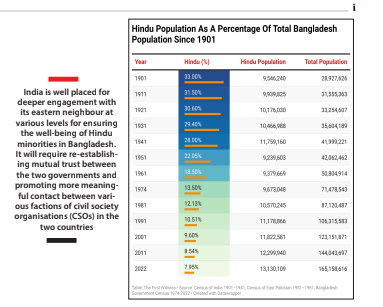
favoured the Muslim majority, and policies sometimes discriminated against Hindus, resulting in social and economic marginalisation. Hindus in Bangladesh have faced instances of per- secution and communal violence. Such events lead to fear and insecurity among the Hindu population, prompting many to emigrate or convert to Islam for safety and social acceptance. High-profile incidents of attacks on temples, homes, and properties during political unrest have further exacerbated their plight. Today, many Hindus in Bangladesh find themselves in economically vulnerable positions. Land reform policies often favour Muslim farmers, and grievances regarding land ownership have historically placed Hindu landowners at a disadvantage. Economic struggles lead to out-migration from rural to urban areas, and in search of better opportunities many Hindus relocate to neighbouring India or other countries.
Cultural Assimilation And Intermarriage
The pressures of assimilation into a predominantly Muslim society can lead to intermarriage, which may dilute Hindu identity among subsequent generations. While relationships between communities can promote harmony, they can also contribute to a decline in religious and cultural practices among Hindus. Bangladesh is prone to natural disasters like cyclones and floods that disproportionately affect vulnerable populations, including Hindus. Displacement caused by these events can lead to further marginalisation, as affected families often struggle to rebuild their lives without adequate support.
Economic migration is common among Hindus seeking better opportunities abroad. The diaspora is significant, with many Bangladeshis relocating to Western countries and India. This trend can lead to a decline in the local Hindu populace, as younger generations seek opportunities outside of Bangladesh.
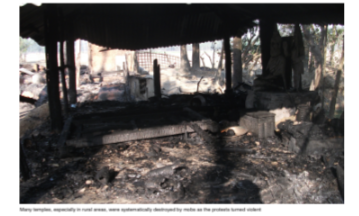
Effects Of Diminishing Numbers
Current estimates show that the Hindu population in Bangladesh has decreased to about 8% to 10% of the total population.
This decline is stark compared to pre-Par-
tition figures. The demographic shift has implications for social representation, reli-
gious practices, and community cohesion.
As the Hindu population decreases, its influence in the cultural, social and political spheres also diminishes. This has led to a cycle of disempowerment, affecting the community’s ability to advocate its rights and sustain its cultural heritage.
The decline of the Hindu population contributed to educational and health dis-
parities. Discriminatory practices limited access to educational institutions and
health care facilities for Hindus, further marginalising the community. The shrink-
ing of the Hindu community threatens the preservation of cultural practices and heritage. Festivals, traditions, and languages are at risk of diminishing, leading to a loss of cultural diversity in Bangladesh.
The decline of the Hindu
population in Bangladesh
is a multi-dimensional
issue influenced by
historical injustices, social
discrimination, economic
hardships, and cultural
assimilation. Addressing
these factors is crucial in
safeguarding the rights
and identity of Hindus
in Bangladesh
Options For India
To reverse the trend of decline of the Hindu population in Bangladesh, a multi-faceted approach is essential. Advocacy of inclusive policies that protect minority rights and promote equal opportunities in education, employment and land ownership can help uplift the Hindu community. Empowering Hindu communities through socio-economic programmes, cultural revival initiatives, and political representation can create a stronger, more resilient identity. Promoting dialogue and understanding between religious communities can foster a sense of belonging and security for Hindus in
Bangladesh. Detailed demographic research and documentation of the experiences of Hindus can highlight the challenges they face and inform policies aimed at protecting minority rights.
The decline of the Hindu population in Bangladesh is a multi-dimensional issue influenced by historical injustices, social discrimination, economic hardships, and cultural assimilation. Addressing these factors is
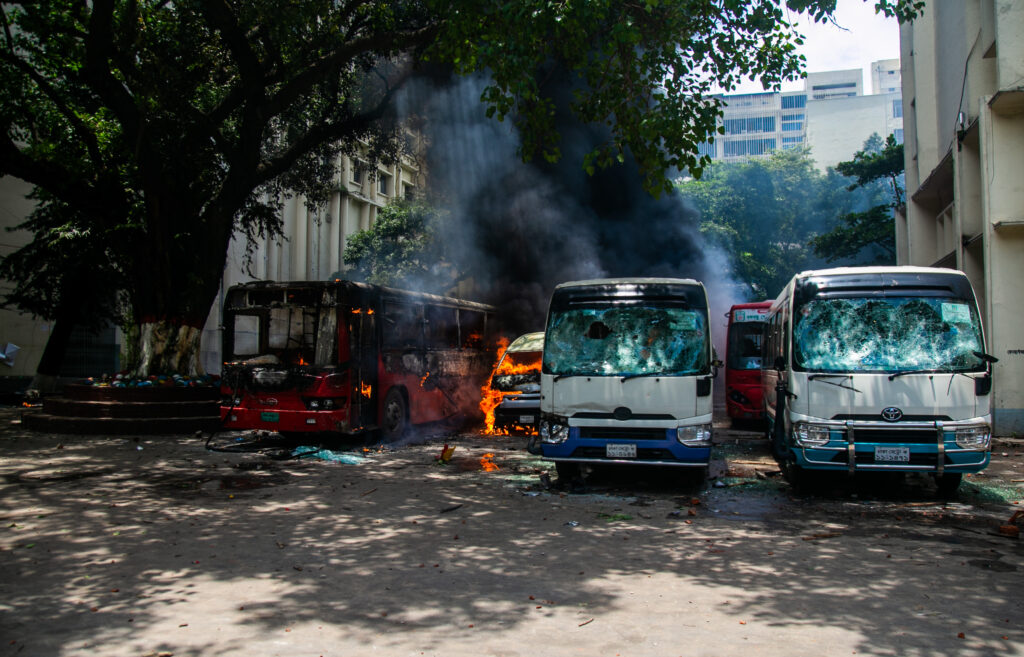
crucial in safeguarding the rights and identity of Hindus in Bangladesh. Strengthening the Hindu community through State intervention will contribute to social harmony and economic growth of Bangladesh.
To ensure the protection of Hindus in Bangladesh, India can take several diplomatic, humanitarian, and strategic actions.
However, it’s essential that these measures be carried out in a way that promotes regional stability, respects Bangladesh’s sovereignty, and encourages peaceful coexistence. India should engage in continuous diplomatic discussions with Bangladesh to address concerns regarding the safety and rights of the Hindu minority. Both governments can work together to establish frameworks for protecting religious minorities.
India can advocate stronger protection of religious minorities in Bangladesh, pushing for reforms that ensure equal treatment, safety, and freedom of religion under the law, and can work with one of its closest neighbours to encourage the enforcement of existing laws that protect minorities,
ensuring they are not subject to discrimination or violence. Supporting interfaith dialogues between Hindu, Muslim, and other religious communities in Bangladesh will go a long way in promoting mutual respect and understanding. India can support the work of local and international human rights organisations in Bangladesh that focus on the protection of minority communities, including Hindus, and ensure their voices are heard on the global stage.
India can provide assistance to Hindu communities in Bangladesh, especially in
areas affected by violence or persecution.
This could include financial aid, healthcare, and rebuilding support after communal clashes. In cases where Hindus are forced to flee due to persecution or violence, India could provide refuge or temporary asylum to those in need, in line with international laws and human rights conventions.
India can channel investment into areas
where Hindu populations are concentrated, promoting development and social welfare
that benefits all communities, including
minorities. Similarly, promoting cultural ties and facilitating greater exchange of students will help in fostering mutual understanding
International public
opinion can be a catalyst
for change and take a
leadership role in fora
such as the United Nations
Human Rights Council
(UNHRC) to advocate the
protection of religious
freedoms in South Asia,
specifically highlighting
the challenges faced by
minorities in Bangladesh
and tolerance. These initiatives could include academic exchanges, cultural programmes, and cooperation in arts and media to promote pluralism.
At the same time, India can raise concerns about the safety and rights of religious minorities in Bangladesh in international fora like the United Nations, especially if
there is evidence of systemic discrimination or violence. But hard-edged diplomacy should be complemented by supporting initiatives undertaken by Bangladesh that promote social cohesion, religious tolerance and pluralism, which are central to any country’s identity.
India can encourage Bangladesh to
strengthen its legal system and ensure that perpetrators of violence against religious minorities, including Hindus, are held accountable through fair trial and justice.
Offering security cooperation can be
another important confidence-building
measure between the two countries and
help prevent violence against minorities.
Areas of cooperation can include training
law enforcement agencies in protecting
vulnerable communities during times of
communal tension.
The Indian government can also work
through global media channels to raise
awareness of the challenges faced by
Hindus in Bangladesh, which may put
pressure on the Bangladeshi government
to act. International public opinion can be
a catalyst for change and take a leadership role in fora such as the United Nations Human Rights Council (UNHRC) to advocate the protection of religious free-
doms in South Asia, specifically highlight-
ing the challenges faced by minorities in Bangladesh.
Ultimately, India’s role should be one of support and cooperation, ensuring that the situation is addressed in a manner that does not undermine Bangladesh’s sovereignty but, rather, strengthens its social fabric and upholds human rights.


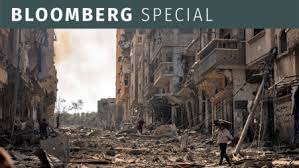
Add Comment